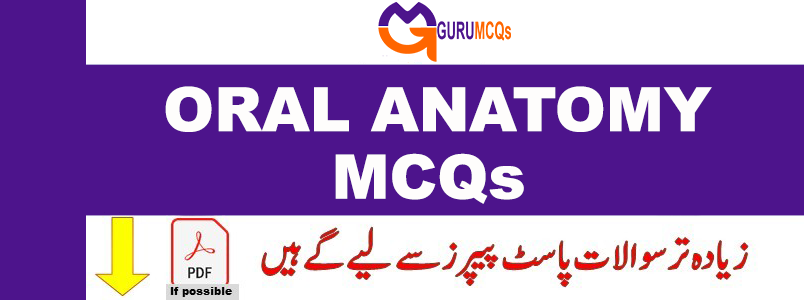
Gurumcqs.com offers a comprehensive collection of 2000+ basic and advanced oral anatomy MCQs, complete with answers and detailed explanations. This section is dedicated to covering all essential aspects of the oral anatomy subject, focusing on key topics related to the anatomy of the mouth and teeth. These include Basic Oral Anatomy, Calcification and Eruption of Teeth, Deciduous Dentition, Occlusion, Permanent Dentition, Physiologic Form of Tooth and Periodontium, Osseous Structures, TMJ, and more. The questions are carefully selected from reputable reference books on oral anatomy. These dental anatomy MCQs are valuable for interview preparation, entrance examinations, competitive exams, and certifications, catering to individuals with varying levels of experience, whether they are seasoned professionals, freshers, or students. Additionally, you can explore MCQs on medical topics on the platform.
141. According to Schour & Massler the crown completion of both permanent maxillary and mandibular first molars is________________?
A. 1½ 2 years
B. 2½ – 3 years
C. 3-4 years
D. 3-5 years
142. Which of the following tooth shows largest Mesio- buccal ridge _____________?
A. Maxillary 1st premolar
B. Maxillary 2nd premolar
C. Mandibular 1st molar
D. Mandibular 2nd premolar
143. The number of point angles in a permanent mandibular first molar is_____________?
A. 6
B. 8
C. 4
D. 10
144. The term diphydont means____________?
A. Second dentition
B. Two same sets of dentition
C. Two separate sets of dentition
D. More than two sets of dentition
145. A six- year molar begins to calcify at______________?
A. Six months IU
B. At birth
C. 1 years after birth
D. 3 years age
146. As compared to permanent tooth , root formation in primary tooth______________?
A. Take less time
B. Take more time
C. Same time
D. Is complete when tooth erupts in oral cavity
147. At birth the following teeth are calcifying____________?
A. Primary incisors & first molar
B. Primary canines & second molars
C. Permanent canines
D. Permanent 3rd molar
148. A child has 12 permanent and 12 decidous teeth, what is his age____________?
A. 8½ years
B. 11½ years
C. 4½ years
D. 13½ years
149. Dentition of humans is_______________?
A. Herbivorous
B. Omnivorous
C. Carnivorous
D. None of the above
150. While charting the dentition of a child, the pedodontist finds that the following teeth are present in all the four quadrants; permanent central incisor , permanent lateral incisor , decidous cuspid , decidous first molar, decidous 2nd molar and permanent 1st molar. The eruptive pattern may be considered most nearly normal for a child aged_____________?
A. 3-6 years
B. 7-10 years
C. 11-14 years
D. 15- 18 years

Pingback: Oral Pathology MCQs with Answers for Exam Preparation - GURU MCQS